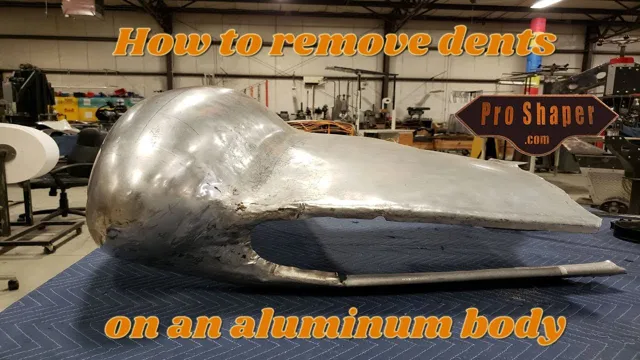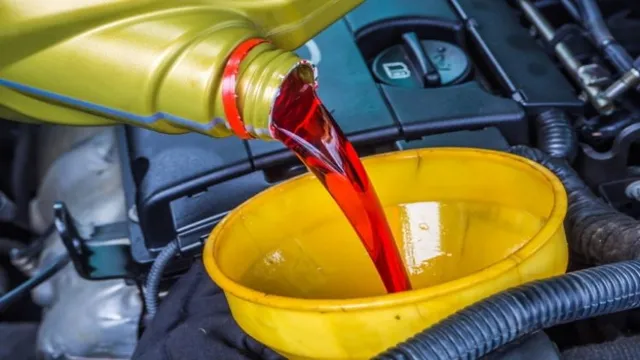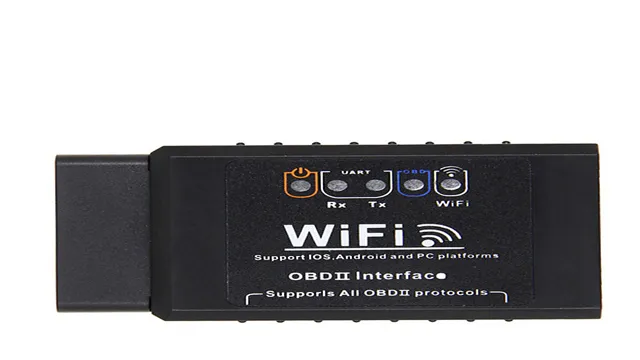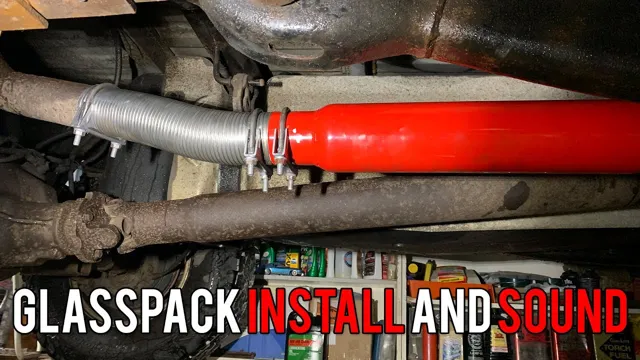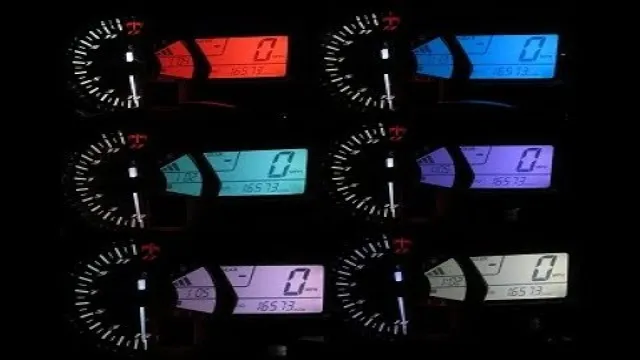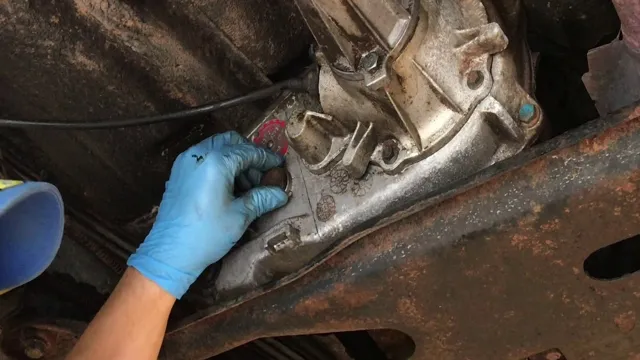Aluminum Dent Removal Made Easy: Expert Tips and Tricks
Aluminum is an excellent material for manufacturing products, as it is lightweight and has a high strength-to-weight ratio. However, it can get dented easily. Whether it’s a car door, bike frame, or a household item, dents can be frustrating to look at and can even compromise the integrity of the item.
But don’t worry, there are ways to get those dents out of your aluminum surfaces! In this blog post, we’ll explore some of the best methods to remove dents from aluminum. From using a plunger to a heat gun, we’ll go over the tools you need and the steps you need to take to restore your items to their original form. We’ll also discuss some common mistakes to avoid when attempting to fix dents and what to do when the damage is too severe.
So, whether you’re a DIY enthusiast or just looking to save some money on repairs, keep reading to learn how to get dents out and restore your aluminum items to their former glory.
Assess the Damage
If you’ve noticed some dents in your aluminum, don’t fret, there are ways to get them out. To start, assess the damage. Is it a small dent or a larger one? Depending on the severity, the method and tools you use will differ.
For small dents, you may be able to use a plunger or suction cup to extract the dent. For larger dents, you might need to use a rubber mallet or even take the item to a professional to fix it. Remember to take your time and be gentle when trying to remove the dent, as applying too much force can cause additional damage.
With some patience and careful work, you can get those dents out and restore your aluminum to its former glory.
Identify the Type of Aluminum
When it comes to assessing damage on aluminum, the first step is to identify the type of aluminum used in a particular item. This is important because different types of aluminum have varying strengths and can react differently to damage. For instance, 1000-series aluminum is soft and malleable, which makes it prone to dents and scratches, while 7000-series aluminum is much stronger and more resistant to impacts.
Understanding the type of aluminum used in a damaged item can help determine the severity of the damage and what action needs to be taken to fix it. It’s crucial to approach each aluminum item differently, as each one is unique in its composition and reaction to damage. By identifying the type of aluminum, it can aid in correctly assessing the damage and determining the best course of action to take.
So, the next time you are assessing damage on an aluminum item, make sure to first identify its type to ensure the correct repair or replacement.
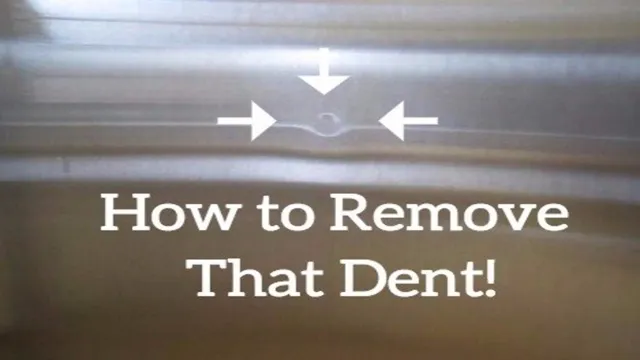
Evaluate the Size and Depth of the Dent
When assessing the damage to your car after getting a dent, it’s important to evaluate the size and depth of the dent. This will give you an idea of the severity of the damage and what repairs may be necessary. If the dent is small and shallow, it may be possible to fix it yourself using a dent removal kit.
However, if the dent is large and deep, it may require more extensive repair work by a professional auto body shop. It’s also important to consider how the dent may have affected the underlying structure of the car, as this can impact its safety and performance. Overall, taking the time to assess the damage thoroughly can help you make informed decisions about how to proceed with repairs and ensure the safety and longevity of your vehicle.
Try Non-Invasive Methods
Aluminum dents can be a nuisance, but fortunately, there are non-invasive methods available to fix them. One simple approach is to use a plunger to suction the dent out. Place the plunger over the dent and push and pull it until the metal pops back into place.
Another option is to use a hair dryer or a heat gun to gently heat the dent, expanding the metal and allowing it to regain its original shape. However, be careful not to overheat the metal as this can cause further damage. For larger dents, a vacuum cleaner can be used to pull the metal back into shape.
Simply place the nozzle over the dent and turn the vacuum on, using your hand to press on the opposite side of the dent to help it pop out. By using these non-invasive methods, you can save money and avoid the need for costly repairs or replacements.
Use a Plunger or Vacuum
When your toilet is clogged, you may naturally feel tempted to reach for harsh chemicals or call a plumber. However, it’s important to try non-invasive methods first, such as using a plunger or vacuum. These tools are inexpensive, readily available, and can often clear out minor clogs without damaging your plumbing.
With a plunger, make sure to use a firm but steady motion to create suction and force the blockage to move. A vacuum can also be effective, as long as you cover the vent with a cloth to prevent any messes. Give these methods a try before resorting to more drastic measures, as they may just do the trick in solving your clogged toilet dilemma.
Apply Hot or Cold Pressure
Hot or Cold Pressure When it comes to easing pain and reducing inflammation in joints and muscles, applying hot or cold pressure can work wonders. Hot temperature can help relax stiff muscles and promote blood flow, while cold temperature can numb the affected area and reduce swelling. Depending on the type of injury or pain you’re experiencing, you can choose between ice packs or heating pads to apply pressure.
You can switch between hot and cold compresses for added relief. Applying pressure for 15-20 minutes every 2-3 hours for the first 2-3 days after experiencing an injury can have a significant impact on reducing inflammation. However, it’s important to remember not to use heat or ice for prolonged periods to avoid damaging the skin or causing further injury.
Hot or cold pressure is a non-invasive method that can be used along with other treatments for pain relief.
Try a Hairdryer and Compressed Air
When it comes to fixing a clogged drain, people often think of invasive methods like calling a plumber or using chemicals to unclog the pipes. However, there are non-invasive methods that are worth considering before resorting to extreme solutions. One such method is using a hairdryer and compressed air.
First, try using the hairdryer to apply heat to the clogged drain. The heat can help loosen up the clog and make it easier to remove. Then, use compressed air to clear out any remaining debris and buildup in the drain.
This method is safe, cost-effective, and eco-friendly. Plus, it’s easy to do yourself without needing any professional help. So, if you’re dealing with a stubborn clogged drain, give this method a try before calling in the professionals.
Consider Invasive Methods
If you have a dent in your aluminum vehicle or equipment, there are a few methods you can try to remove it. In some cases, using invasive methods may be necessary to fully fix the dent. One option is to use a suction cup or vacuum to pull the dent out.
Another option is to use a hammer and dolly to reshape the metal in the affected area. However, it’s important to be cautious with these methods and use them with care to avoid causing additional damage. If you’re unsure about using invasive methods, it may be best to take your aluminum item to a professional repair shop that has experience working with this material.
With the right approach, you can get your aluminum back to looking its best and functioning properly.
Use a Heat Gun and Dry Ice
If you’re dealing with stubborn rust or old adhesive residue on a surface, you might consider using a heat gun and dry ice for effective removal. However, these methods can be invasive and potentially damaging if used improperly. Before attempting these techniques, it’s important to take proper safety precautions and ensure that you have the necessary equipment and expertise.
In the hands of a skilled professional, a heat gun and dry ice can be highly effective for removing even the toughest residues. Just be sure to proceed with caution and take your time to avoid damaging the underlying surface or creating a hazardous situation. With the right approach, you can successfully remove even the most stubborn rust and adhesive residues, leaving your surfaces looking brand new.
Apply a Aluminum Solder
Applying an aluminum solder can be a daunting task, but when it comes to invasive methods, it may be necessary. Invasive methods refer to the use of machinery or tools that can leave a mark on the aluminum surface. One of the most common methods is using a drill to create a small hole on the aluminum surface for the solder to penetrate.
This method may be necessary when you are dealing with a thick aluminum surface and a low-temperature solder. Other invasive methods include sandblasting, grinding, and welding. However, before using invasive methods, it is important to assess whether it is really necessary and if there are any alternative methods that can be used.
Invasive methods can be time-consuming and can damage the aluminum surface, which may require additional repair work. Therefore, it is important to proceed with caution and consult with a professional if necessary. Remember, applying an aluminum solder requires precision and patience, so take your time and ensure that you follow the proper procedures to achieve optimal results.
Prevent Future Dents
If you own an aluminum car, truck, or boat, you know how vulnerable it can be to dents and other types of damage. Luckily, there are ways to prevent future dents from occurring. One easy solution is to invest in a car cover or boat cover, depending on your vehicle type.
This can help protect your vehicle from hail, fallen branches, and other common causes of dents. Additionally, you can be mindful of where you park your vehicle. Avoid parking near carts, other vehicles, or anything that could bump into your car or boat.
If possible, park in a garage or other covered area to keep your vehicle out of harm’s way. By taking these precautions, you can keep your aluminum vehicle looking like new for years to come. And if you do end up with a dent, don’t worry – there are plenty of methods for how to get dents out of aluminum that can restore your vehicle to its former glory.
Use Protective Coatings
Protective coatings are a great way to prevent future dents on your vehicle. These coatings can come in a variety of forms, from wax to ceramic coatings, and can help to provide a layer of protection between your vehicle and the elements. A wax coating, for instance, can help to prevent scratches and dents from high winds, while a ceramic coating can provide greater protection against hail and other impacts.
When it comes to choosing a protective coating for your vehicle, it’s important to consider your individual needs and the specific conditions your vehicle is likely to face. By taking the time to invest in a quality protective coating, you can help to keep your vehicle looking its best for years to come. So if you want to keep your vehicle dent-free, be sure to explore the many options for protective coatings on the market today!
Avoid Impact and Pressure
Preventing dents on your car is essential to maintain its value and appearance. One of the best ways to avoid dents is to minimize impacts and pressure on your vehicle. For instance, avoid tailgating other cars as this may result in a rear-end collision.
Another way to avoid pressure on your car is to avoid parking too close to other vehicles. This can help prevent accidentally hitting other cars with your doors or fenders. Additionally, if you need to transport any heavy items, be sure to use a protective covering or a cargo net to prevent any damage caused by the shifting weight.
By avoiding impacts and pressure, you will improve the overall look and value of your car, preventing future dents, and ensuring its longevity.
Conclusion
So, there you have it folks. Getting dents out of aluminum is not rocket science, although it may require some patience and elbow grease. Whether you opt for the boiling water method, the hair dryer trick, or the plunger approach, always make sure to take necessary safety precautions and protect your hands and eyes.
And remember, even if you can’t get the dent out completely, it’s not the end of the world – a small ding can add character and tell a story about your adventures with your trusty aluminum gear. Happy repairing!”
FAQs
Can I use a plunger to remove dents from aluminum?
No, using a plunger may cause further damage to your aluminum surface. It is best to use specialized tools designed for removing dents.
Is it possible to remove dents from aluminum using household items?
Yes, there are some household items that can be used to remove small dents from aluminum surfaces. These include a hairdryer, compressed air, and boiling water.
How much does it typically cost to remove dents from aluminum?
The cost of removing dents from aluminum will depend on the severity of the dent and the size of the affected area. Generally, it can cost anywhere from $50 to $500.
Can I paint over an aluminum surface after removing dents?
Yes, you can paint over an aluminum surface after removing the dents. However, it is important to sand and clean the surface properly before painting to ensure the paint adheres properly.

